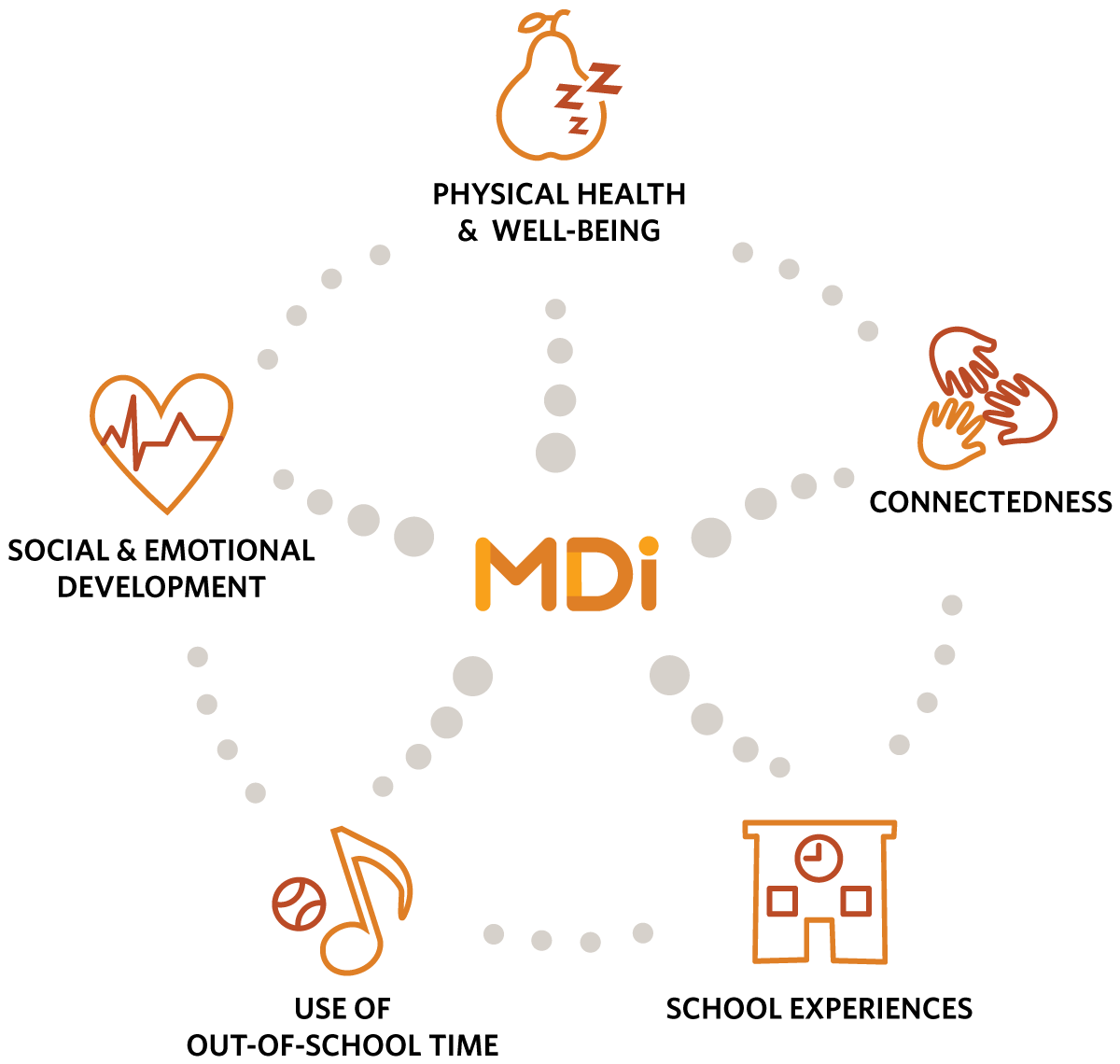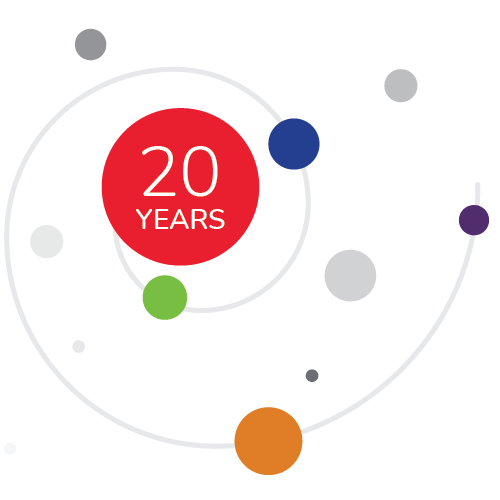Topic: Monitoring Tools
Featured Resources
MDI Data Dashboard
The MDI dashboard allows you to explore deeper and interact with MDI data across space, years and grade levels with greater control. The MDI dashboard helps replace the MDI neighbourhood profiles we have typically released in the past in the MDI School District and Community Reports.
EDI Data Dashboard
The EDI dashboard allows you to explore EDI data over the past 20 years in greater depth across space and time with greater control and across more boundaries than ever before. The EDI dashboard replaces the community profiles we have typically released in the past.
| Type | Title | Date | |
|---|---|---|---|
|
the 15 by15 Policy Framework proposes a fundamental shift in how we think about
health care and human capital. We recommend shifting from treating illness after the fact,
to promoting health from the outset of the human life course.
|
2022/06/29 | ||
|
Cleary J, Nolan C, Guhn M, Thomson KC, Barker S, Deane C, et al. A study protocol for community
implementation of a new mental health monitoring system spanning early childhood to young adulthood.
Longitudinal Life Course Stud. 2023 Jul 1;14(3):446-65. Available from:
https://bristoluniversitypressdigital.com/view/journals/llcs/14/3/article-p446.xml
|
2023/07/07 | ||
| 2022/06/02 | |||
| 2023/02/07 | |||
| 2024/04/16 | |||
| 2022/03/16 | |||
| 2022/03/16 | |||
| 2022/03/16 | |||
| 2023/05/25 | |||
| 2024/04/08 | |||
| 2023/04/25 | |||
| 2024/03/02 | |||
|
This profile outlines how HELP has worked closely with the community of Revelstoke for more than two decades, collecting data through the Child Development Monitoring System (CDMS) and supporting collaborative cross-sector efforts to improve outcomes for local children and their families.
|
2023/05/09 | ||
|
Poon, B., Holley, P., Louie, A., & Springinotic, C. (2015). Dental caries disparities in early childhood: a study of kindergarten children in British Columbia. Canadian Journal of Public Health, 106(5), e308-14.
|
2015/07/12 | ||
|
Thomson KC, Richardson CG, Samji H, Dove N, Olsson CA, Schonert-Reichl KA, et al. Early childhood social-emotional profiles associated with middle childhood internalizing and wellbeing. Journal of Applied Developmental Psychology. 2021;76:101301.
|
2021/07/12 | ||
| 2022/06/07 | |||
|
The EDI dashboard allows you to explore EDI data over the past 20 years in greater depth across space and time with greater control and across more boundaries than ever before. The EDI dashboard replaces the community profiles we have typically released in the past.
|
2023/01/25 | ||
| 2023/09/29 | |||
| 2023/11/16 | |||
| 2023/03/08 | |||
| 2023/05/25 | |||
| 2022/06/07 | |||
|
Data file for EDI Wave 2 - 8 providing all publicly available data across educational, health, and other administrative boundaries.
|
2023/03/28 | ||
| 2022/03/16 | |||
|
Provides a summary of Early Development Instrument (EDI) data collected from 2019-2022.
|
2022/12/08 | ||
| 2024/06/20 | |||
|
2016 Census data custom tabulated to our HELP Neighbourhood boundaries. Can be joined with our HELP Neighbourhood shapefiles to display data spatially in GIS software.
|
2022/09/06 | ||
| 2022/06/01 | |||
| 2022/06/01 | |||
|
Three years on – mental health, early adolescence and the pandemic: What we know from the student perspective
|
2023/05/05 | ||
|
The MDI dashboard allows you to explore deeper and interact with MDI data across space, years and grade levels with greater control. The MDI dashboard helps replace the MDI neighbourhood profiles we have typically released in the past in the MDI School District and Community Reports.
|
2023/07/24 | ||
| 2022/06/01 | |||
| 2022/09/14 | |||
| 2023/11/15 | |||
| 2023/11/09 | |||
| 2023/11/09 | |||
| 2023/05/25 | |||
| 2023/11/15 | |||
| 2022/06/07 | |||
| 2024/06/20 | |||
| 2024/04/16 | |||
|
Schonert-Reichl KA. Chapter 12. Measuring and monitoring children's social and emotional competence and well-being in schools, families, and communities at the population level. The Middle Years Development Instrument. In: Jones SM, Lesaux NK, Barnes SP, Abenavoli RM, Berry DJ, editors. Measuring noncognitive skills in school settings: Assessments of executive function and social-emotional competencies. New York, NY: Guilford Press; 2022.
|
2022/07/12 | ||
|
Thomson, K., Oberle, E., Gadermann, A. M., Guhn, M., Rowcliffe, P., & Schonert-Reichl, K. (2017). Measuring social- emotional development in the middle childhood: the Middle Years Development Instrument. Journal of Applied Developmental Psychology, 55, 107-118.
|
2017/07/12 | ||
|
Monitoring System Data: Research in Action is the latest brief from the Human Early Learning Partnership (HELP) showcasing the value of Monitoring System data for research purposes. The brief provides examples of both research linking data from one Monitoring System tool to another (such as CHEQ and EDI data) and research linking these data to census and health administrative datasets.
|
2024/05/02 | ||
|
Janus M, Ryan J, Pottruff M, Reid-Westoby C, Brownell M, Bennett T, et al. Population-based teacher-rated
assessment of anxiety among Canadian kindergarten children. Child Psychiatry Hum Dev. 2023;54(5):1309-
20. Available from: https://doi.org/10.1007/s10578-022-01332-9
|
2023/10/31 | ||
|
Positive childhood experiences (PCEs) may protect against depression among adolescents with adverse childhood experiences (ACEs) and promote mental health and well-being (MHW) among all pandemic-era adolescents. These findings emphasize the importance of addressing social determinants of mental health to mitigate the impact of ACEs and promote PCEs as part of a public health approach to MHW.
|
2024/03/21 | ||
|
Ababneh, E.G., Duku, E.K., Reid-Westoby, C. et al. Psychometric properties and factor structure of the Early Development Instrument in a sample of Jordanian children. BMC Psychol 10, 316 (2022). https://doi.org/10.1186/s40359-022-01014-0
|
2023/10/26 | ||
|
Talarico F, Liu YS, Metes D, Wang M, Wearmouth D, Kiyang L, et al. Risk factors for developmental vulnerability:
Insight from population-level surveillance using the Early Development Instrument. Digit Health.
2023;9:20552076231210705. Available from: https://doi.org/10.1177/20552076231210705
|
2023/11/21 | ||
| 2023/05/25 | |||
|
Dr. Magdalena Janus of Offord Centre for Child Studies, McMaster University, presents to the second meeting of the BC Cross-Ministry Early Years Development Instrument (EDI) Table.
|
2023/01/03 | ||
| 2023/03/07 | |||
|
Dr. Eva Oberle, scientific lead for the Middle Years Development Instrument (MDI), and others from the MDI team, share highlights from the latest MDI data collection (2022-23 school year) from over 47,000 children in grades 4 through 8 in BC. Hear about children’s well-being over the last 5 years, from before and during the COVID pandemic, and their answers to some new questions on the MDI — including climate concerns and social media use.
|
2023/10/24 | ||
| 2024/04/19 | |||
| 2024/06/26 | |||
|
Samji H, Snell G, del Casal JM, Low B, Wu J, Badar S, et al. Youth Development Instrument (YDI): Youth development and well-being - School District Report, 2020-2021. Burnaby, BC: Simon Fraser University Faculty of Health Sciences, Capturing Health and Resilience Trajectories (CHART) lab; 2021.
|
2022/07/12 |

